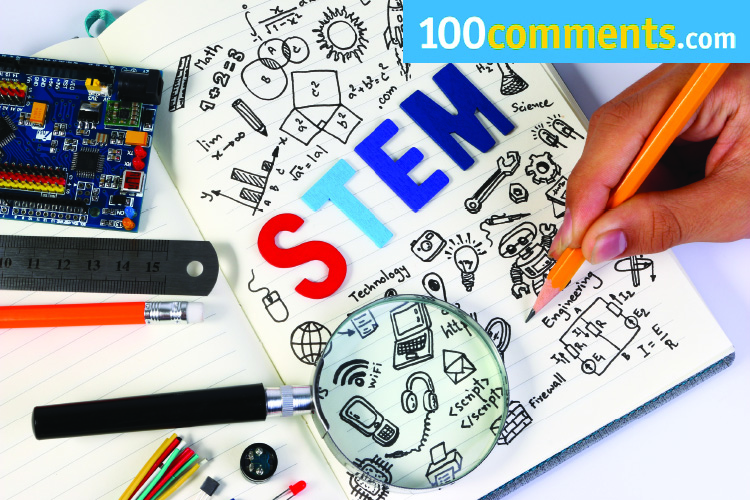Malaysia intends to become a high-income nation by the year 2020, but in order to achieve this, the country needs a steady supply of experts in the fields of Science, Technology, Engineering and Mathematics (STEM). As such, the government and relevant ministries are doing everything within its capabilities to increase the number of students choosing a STEM area of study. Why should you consider a STEM-related programme for your child? Well, think about it: Does everyone at home have a digital device of some sort? The answer, as often predicted, will be a resounding ‘yes’.
Mark Zuckerberg – This individual needs no introduction. He was only 19 years old when he co-founded social networking website Facebook in his Harvard University dormitory room with several other friends. In 2015, Zuckerberg’s net worth was estimated at USD35.7 billion.
He is not the only example out there in this science and technology-driven world but it paints a clear picture for many of us. The world is rapidly evolving, especially in the fields of STEM. Building a mobile application or apps as they are more commonly known is no longer rocket science. Even toddlers can be seen glued to their parents’ tablets while strapped securely in their strollers.
Today, how and what one should be learning at an early age is continuously changing. With this in mind, Malaysia recognises the importance it must place on nurturing a knowledge-driven economy that will have abilities to function within STEM fields. So, let’s break this down.
Table of Contents
What is STEM?
STEM education is a teaching and learning approach that integrates the content and skills of science, technology, engineering, and mathematics. It also involves the preparation of students in competencies and skills in the four disciplines.
Why is it important?
- It provides students with science, math, engineering and technology competencies in sequences that build upon each other and can be used with real-world applications.
- It prepares students for post-secondary study and the 21st century workforce.
- It creates critical thinkers, increases literacy in science and paves the way for the next generation of innovators. This would then lead to new lines of products and processes that will sustain the economy in the long haul.
- The STEM content, once integrated into students, will yield behaviours which include engagement in inquiry, logical reasoning, higher-order thinking skills, improved measures in collaborating and investigating either as an individual or as a team.
- The system focuses on ensuring the depth of understanding, which is much more important than breadth of topics.
- It increases the proportion of questions that focus on creative and problem-solving skills.
- Career prospects are aplenty if your child is well-equipped in STEM fields. A simple example, being able to understand and apply mathematics into daily activities helps ensure your child is provided with a bright future. After all, many job opportunities require a sufficient amount of Math and Science skills.
How is STEM content being taught at Malaysian National Schools?
One approach is the blended learning concept. This refers to the integration of face-to-face and technology-mediated instructional approaches, the latter of which typically provides students with some element of control over time, place, pace or style of learning. The model thus goes beyond the use of technology as a mere teaching aid of, for example, showing a video to illustrate a concept, and instead deploys new instructional strategies and pedagogical approaches.
A blended learning classroom does not have a fixed single model. However, a common model involves dividing class time between computer-based and teacher-based instructional activities.
During the computer-based session, students utilise adaptive learning software to learn at their own pace, and through their preferred learning style. Teachers then analyse the resultant data from the software to identify areas where students require extra coaching.
Another increasingly popular model is that of the flipped classroom. Teachers assign “pre-reading” in the form of online lectures or e-learning lessons, which students complete at home. Classroom time is then used for peer-group activity, assignments and discussions. The role of the teacher therefore evolves from a lecturer to that of a facilitator and coach.
Dragging one television set into the classroom to show a movie or a clip is something best kept as a cautionary tale. These days, an increasing number of national schools are fully-equipped with computers sufficient for a classroom of students. With the concept of using videos to enhance learning processes, the Education Ministry has already been hosting an e-learning video library for students on EduWebTV.
These short videos focus on explaining specific topics, and cover multiple subjects, including the critical subjects of Bahasa Malaysia, English language, Science and Mathematics. The Ministry intends to enhance the quality of this library by having submissions curated to ensure that they are of high quality, as well as drawing on other websites that offer comparable e-learning content. The videos will also be mapped to the curriculum to make it easier for students to search for content.
What is the way forward?
According to the National Council for Scientific Research and Development, it was estimated that Malaysia will need 493,830 scientists and engineers by 2020.
The ministry, aware of this figure, is exploring the possibility of increasing the instructional time allocated to Mathematics and Science, and streamlining the curriculum to minimise content overlap with other subjects and the post-secondary STEM curricula.
As the Secondary School Standard Curricula (KSSM) and revised Primary School Standard Curricula (KSSR) will only be rolled out in 2017, the Ministry will simultaneously develop and launch a series of top-up modules for both the primary and secondary school curriculum.
Ministry initiatives aside, it’s important that as a parent, ample support is provided to nurture individuals that will develop a liking and eventually embark on a STEM-related field.
This is no longer an age that merely develops responsible citizens. This is an age that develops responsible digital citizens with the ability to identify problems, visualise solutions, design prototypes and implement solutions.
Reference:
Malaysia Education Blueprint (2013-2025)
















